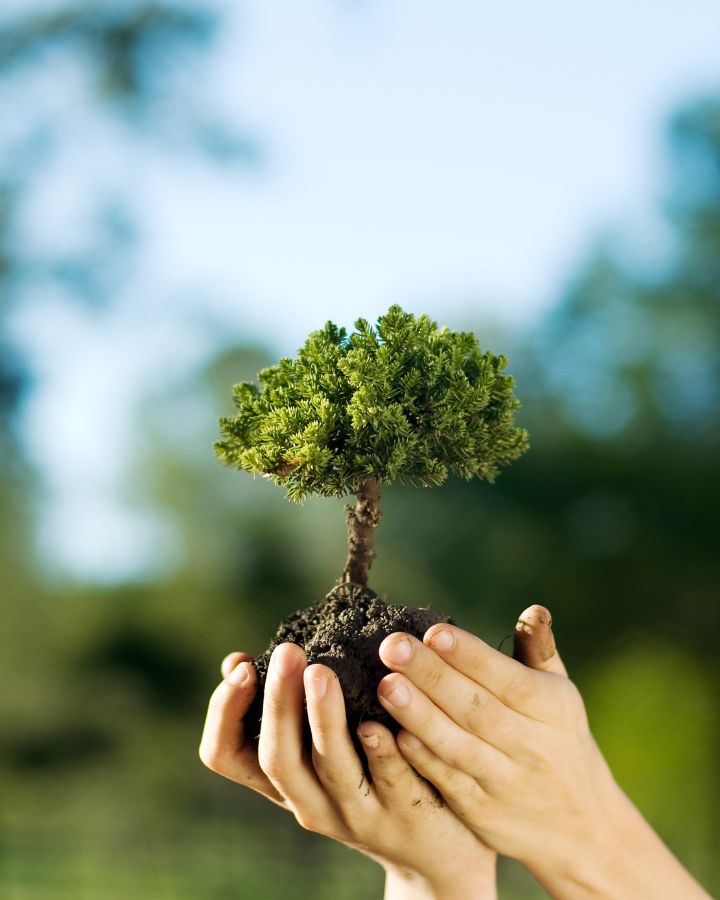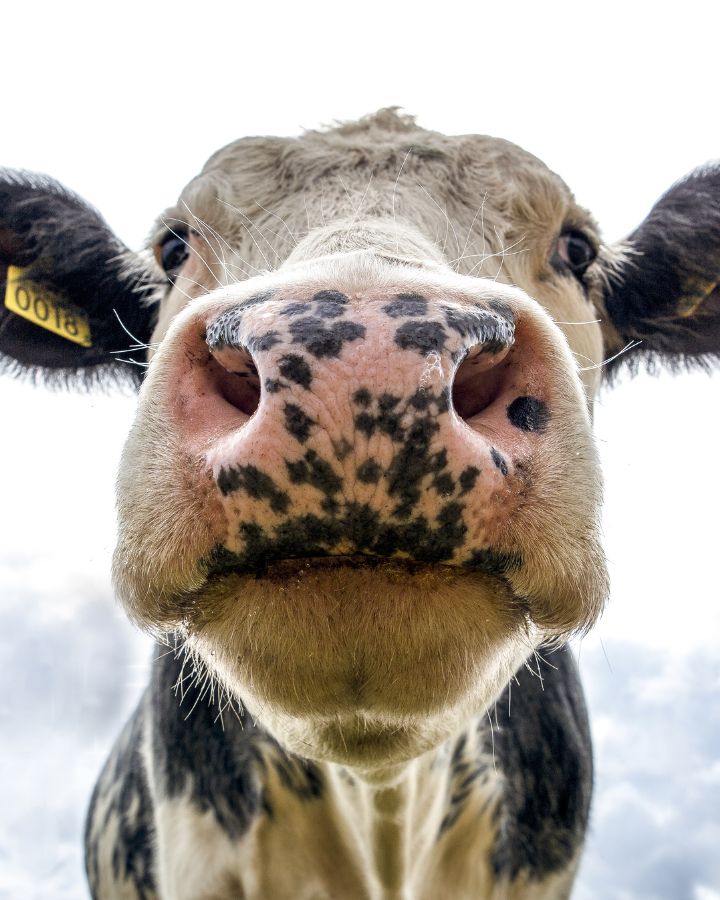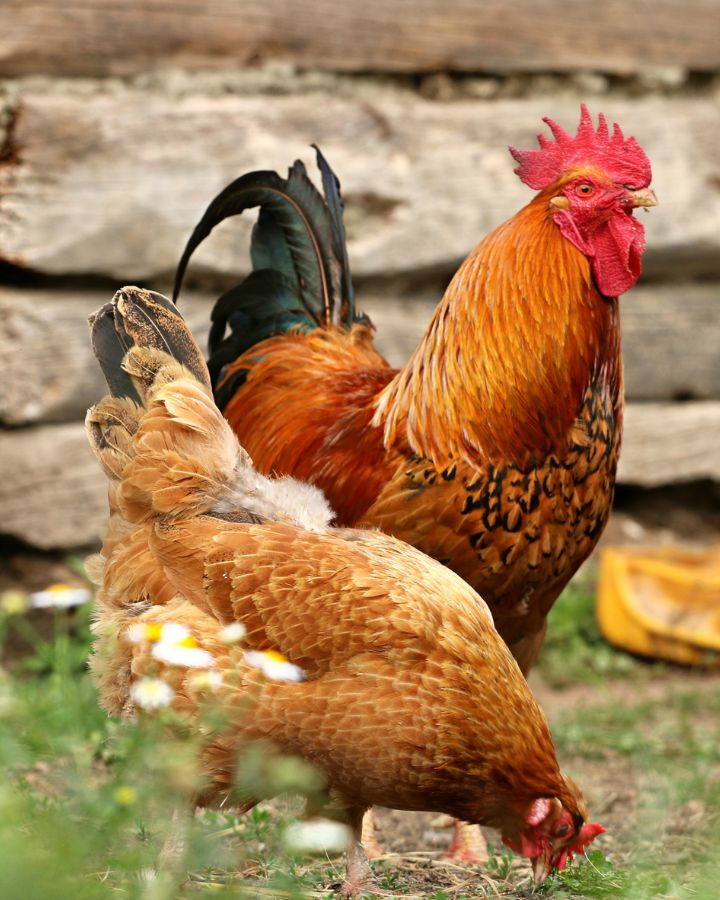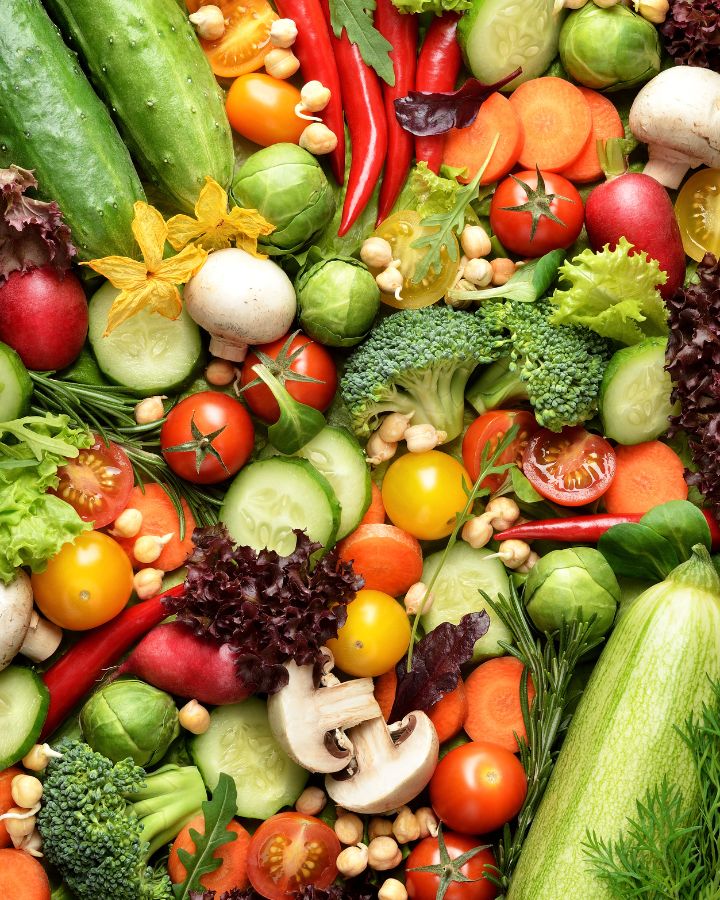Whether you’re considering making the shift and going vegan, are already vegan and trying to find out more about how your new lifestyle is making a difference in the world, or are simply curious about how (or even if) being vegan can help the environment, this is a great place to start. Below I’ve outlined some of the most biggest environmental issues and their links to a plant-based diet. While these are very complex topics that can hardly be summarised in a short article, I hope I’ve done my best to break them down into easily digestible chunks while keeping it as informative as possible.

I remember first watching the documentary Cowspiracy almost ten years ago. It’s hard to imagine that there was a time when environmental veganism was still being debated over, and the impact of factory farming on the environment was considered a “conspiracy”. It’s even harder to imagine that now, in early 2021, there are still people out there who aren’t quite sure how, or even if, going vegan is good for the environment.
There are quite a few facts that the documentary gets wrong, but the underlying idea is clear and very straightforward – reducing our consumption of meat and animal products can decrease greenhouse gas emissions, slow down or even completely stop deforestation, preserve water supply, and help reduce waste. All of these would have a positive impact on the environment.
Greenhouse Gas Emissions
We’ve all heard that greenhouse gases are directly linked to climate change. So, what exactly are greenhouse gases, and why are they bad for the environment?
The name itself is actually very descriptive. Certain gases, such as methane and CO2, act similarly to a glass in a greenhouse. They trap the sun’s heat and then stop it from leaking back into space, causing the temperature inside to rise. Many greenhouse gases occur naturally, but human activity is causing an unnatural increase of some of them in the atmosphere. There are many causes for rising emissions, but the main culprits are:
- Burning coal, oil and gas – this produces carbon dioxide and nitrous oxide
- Cutting down forests (deforestation) – trees absorb carbon dioxide from the air and regulate the climate
- Excessive livestock farming – cows and sheep produce large amounts of methane
- Fertilisers containing nitrogen – produce nitrous oxide emissions
A lot of different numbers have been thrown around regarding how much industrial farming actually contributes to greenhouse gas emissions. According to the UN, meat and dairy (farmed livestock) farming accounts for 14.5% of all human-made greenhouse gas emissions.
It might not seem much, but according to a 2016 report on food and climate in the academic journal, Proceedings of National Academy of Sciences (PNAS), if we all went vegan, the world’s food-related emissions would drop 70% by 2050.
Deforestation
Deforestation is a complex issue that has negative consequences for almost every aspect of our existence on this planet. Increased greenhouse gases, species extinction, and soil erosion are only the most obvious ones.
Increased Greenhouse Gases
Let’s start with greenhouse gases, as we’ve already touched upon this issue before. Healthy trees absorb carbon dioxide from the atmosphere and give us oxygen back. I love the analogy of rainforests being the lungs of our planet. They breathe in CO2 and breathe out oxygen – exactly the opposite of what our lungs do, creating the perfect conditions for life on this planet.
Deforested areas lose the ability to clean the air and provide oxygen, causing even more carbon dioxide to stay trapped in the atmosphere.
Loss of Habitat
This is probably the most obvious one, but let’s address it anyway. Forests are home to 70% of land animals and plant species, whose extinction is either directly or indirectly linked with cutting down trees.
Not only are many of them destroyed along with their homes, but the trees in the rainforest also provide the canopy that regulates the temperature in the area. A more drastic temperature variation from day and night makes deforested areas much more similar to a dessert, which can prove fatal for many inhabitants not used to such a climate.
Water in the Atmosphere
The trees help control the level of water in the atmosphere by helping to regulate the water cycle. In deforested areas, there is less water in the air to be returned back to the soil. This then causes dryer soil and the inability to grow crops.
Soil Erosion and Flooding
Deforestation is also tightly linked to soil erosion and coastal flooding. Trees help the land to retain water and topsoil, which provides the rich nutrients to sustain additional forest life.
So, what do rainforests have to do with meat?
We all get it – deforestation is bad. But what does cutting down trees in the rainforest have to do with animal farming? Aren’t forests then turned into fields?
Yes, but the crops grown on those fields are mainly used to feed livestock, which is then used to feed humans. As David L. Katz, MD, MPH, FACPM, FACP, FACLM, co-author with Mark Bittman of How to Eat, puts it: “If you just eat the plants, you cut out the middleman.” Eating animals who eat plants, instead of eating plants yourself, is a terribly inefficient way of doing things. And doing it on the scale that we’ve started doing it in the past few decades has never been done before. Industrial farming is not in any way natural, it’s not what “we were made to do”, and it’s certainly not what humans have always done.
Below are some interesting facts regarding land use and animal agriculture:
- Animals exploited for their flesh or their feed cover ⅓ of the Earth’s ice-free land.
- Animal agriculture is responsible for up to 91% of the destruction of the Amazon rainforest.
- The world’s cattle alone consume a quantity of food equal to the caloric needs of 8.7 billion people, more than the entire current human population of the Earth.
- Producing protein from chickens requires three times as much land as producing protein from soybeans.
- Meat consumption is thought to be one of the leading causes of modern species extinctions.
Water Supply
How is water supply even a problem in this day and age?
A simple explanation of a complex issue is that despite the fact that “over 70% of our planet is covered with water, the resource is not necessarily located where it can be economically used, and some of what is accessible is contaminated, in dispute, and not appropriate for the intended use.”
And yes, you’ve guessed it, excessive animal farming uses up a lot of water.
- On average it takes between 15,000 and 20,000 litres of water to produce one kilogram of beef, which works out to approximately 3,000 litres of water to produce one 200g beef burger – the equivalent of 30 5-minute showers. (1x 200g beef burger = 30x 5-minute showers).
- Most of the total volume of water used for animal agriculture (98%) refers to the water footprint of the feed for the animals. About ⅓ of the world’s grain and 80% of the world’s soya is fed to the animals we rear for food.
- Farming (both animal and plant) accounts for about 70% of water used in the world today, up to 92% of freshwater, with nearly ⅓ of that related to animal farming and growing crops to feed the animals.
- Intensive animal farming can cause serious water pollution such as eutrophication, an excessive amount of algae in the water caused by run-off of animal faeces and leftover feed, often leading to loss of fish and other aquatic wildlife.
- 96% of fish eaten in Europe comes from fresh-water fish farming, but the vast quantities of fish excrement and uneaten fish food that settles on the pond bed makes the perfect environment for the production of the greenhouse gas methane.
- A meat-free diet can cut our water footprint in half! Studies show that a healthy meat-free diet reduces our water footprint by up to 55%.
- The United Nations Environment Assembly says that plant-based burgers require between 75–99% less water; 93–95% less land; and generate 87–90 per cent fewer emissions than regular beef burgers.
- One steak takes 7,500 litres of water to produce.
Can One Person Really Make a Difference?
In short, yes. Not only because we as individuals have a much greater direct impact on the world than we think, but also because our everyday decisions and actions trigger a domino effect. Society,, after all, is nothing more than a group of individuals making small decisions every single day.
“But reducing your own carbon emissions isn’t the most powerful thing you can do. You can also send a signal to the market that people want zero-carbon alternatives and are willing to pay for them. When you pay more for an electric car, a heat pump, or a plant-based burger, you’re saying, “There’s a market for this stuff. We’ll buy it.” If enough people send the same signal, companies will respond—quite quickly, in my experience.” What Can You Do to Fight Climate Change, Bill Gates
Below are some mind-blowing stats about exactly how big of a difference one person can make.
- A typical omnivore will eat more than 7,000 animals in their lifetime. That doesn’t mean 7,000 will be spared today, but it’s the simplest rule of economics that decreased demand leads to decreased supply. Even if your goal is not to completely give up animal products, everyone cutting back on meat would send a strong signal to the industry, which would be forced to reconsider their inhumane farming methods.
- One person going vegan for one month can save 620 pounds of harmful carbon emissions, and save 913 square feet of rain forest and 33,481 gallons of water.
- Skipping just one pound of beef can save up to 1799 gallons of water, which is equivalent to flushing a toilet 514 times.
- A person who follows a vegan lifestyle produces the equivalent of 50% less carbon dioxide than a meat-eater and uses an 11th of the oil, 1/13th of the water and 1/18th of the land.





Leave a Reply